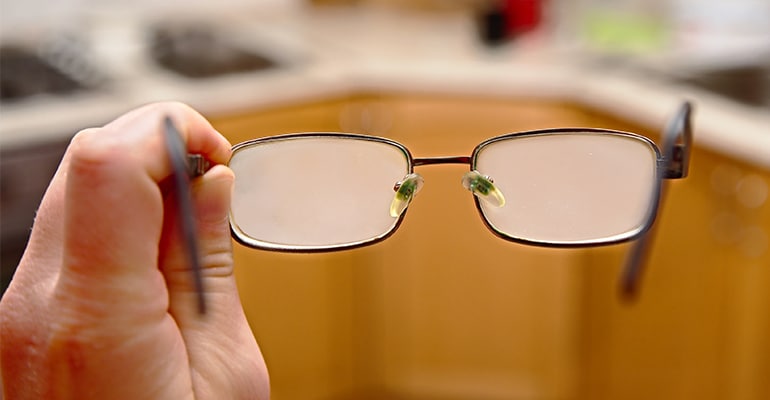Everything You Need to Know about Glasses’ Fogging Up
If things get worse, your eyeglasses may start to fog up and your vision will start to become blurry. Certain conditions cause lenses to become fuzzy or moist, and in most cases they are related to changes in weather or ambient temperatures.
Causes of the Fogging Up
When you are in a room where the temperature is colder than the outside, your glasses will naturally be colder as well. But when you are outside, your glasses will fog up because the steam or vapor from the warm air will hit your cold glasses and turn into droplets. Then the fogging continues until your glasses warm up.
There is also the possibility that you are wearing your glasses too close to your face so that when you breathe, there is no outlet for the air. As a result, it reaches the lenses and coats your glasses with a foggy coating. The same thing happens when sweat from your skin evaporates, hitting the cold glasses and fogging them up.

How to Prevent Fogging Up?
1. Add anti-fog coating to the lenses
Anti-fogging coatings work by blocking the moisture that can stick to the lenses. You can specifically ask to apply the coating (temporary or permanent) to your glasses.
If you decide to apply an anti-fog coating to your lenses, please avoid touching or wiping the lenses that could cause the coating to flake off.
2. Use anti-fog wipes or sprays
If your eyeglasses don't already have any anti-fog coating, a commercially manufactured anti-fog solution can be a good choice.
Anti-fog wipes are formulated with compounds that prevent water droplets from forming on the surface of your eyewear. A spray or paste form can be applied directly to the lenses. Then please use a clean cloth to wipe and polish until the glasses are clear.
3. Choose essentials and accessories used in rainy season
On rainy days, you will need to wear rainproof clothing and keep your glasses protected in a rainproof suit. This may mean that you don't use a scarf or face shield, but if it's cold and you can't stand to be without one, then you can choose more ventilated scarves so that the air is circulated and your glasses are less likely to fog up.
Contact lenses can also work well in the cold season. But you should be aware that they may cause dry eyes, and you should usually use eyedrops to relieve dry eyes. Besides, it is advisable to know some tips about eye protection and something about dry eyes.
4. Keep your eyeglasses away from your face
Vapour from breathing turns into moisture as it gets trapped on the cold surface of your glasses. By moving the glasses slightly away from the face, air can flow quickly between the skin and the lenses, thus reducing the heat difference.
5. Take off your eyeglasses
When your glasses start to fog up, taking off your eyeglasses is probably the most logical solution. In addition to not letting it get worse, your eyeglasses do not need to be wiped down as often, as this can leave marks or scratches on the lenses. For this, it is necessary for you to know about how to remove scratches from your glasses at home.

How to Effectively Solve the Fogging Up of Glasses Caused by Wearing a Mask?
Tip 1: When the glasses pressed on the top of the mask, you can first lift the mask up to the position below the eyes, and then adjust the wire on the mask, so that it fits closely on the bridge of the nose and the exhaled hot air is not easy to disperse. Finally, the glasses will be pressed on the mask, so that the small amount of heat that escapes is not easy to make glasses fog up.
Tip 2: Why the lens is easy to fog up when we wear masks? This is because the gas we exhale contains water vapor, when the warm water vapor touches the cold lens, it will be liquefied on the surface of the lens to form small water droplets, so the lens is fogged up. So as long as the gap between the mask and the face is reduced to block the water vapor from rising, you can prevent the lenses from fogging up. Therefore, you can take a tissue, fold it into a strip, put it under the metal strip of the mask, and then bend the metal strip according to the curve of the nose to make it fit fully. In this way, the tissue padded below the metal strip of the mask will fill the gap between the mask and the face, greatly reducing the heat you exhale escapes, and the lens will not be easy to fog up.


